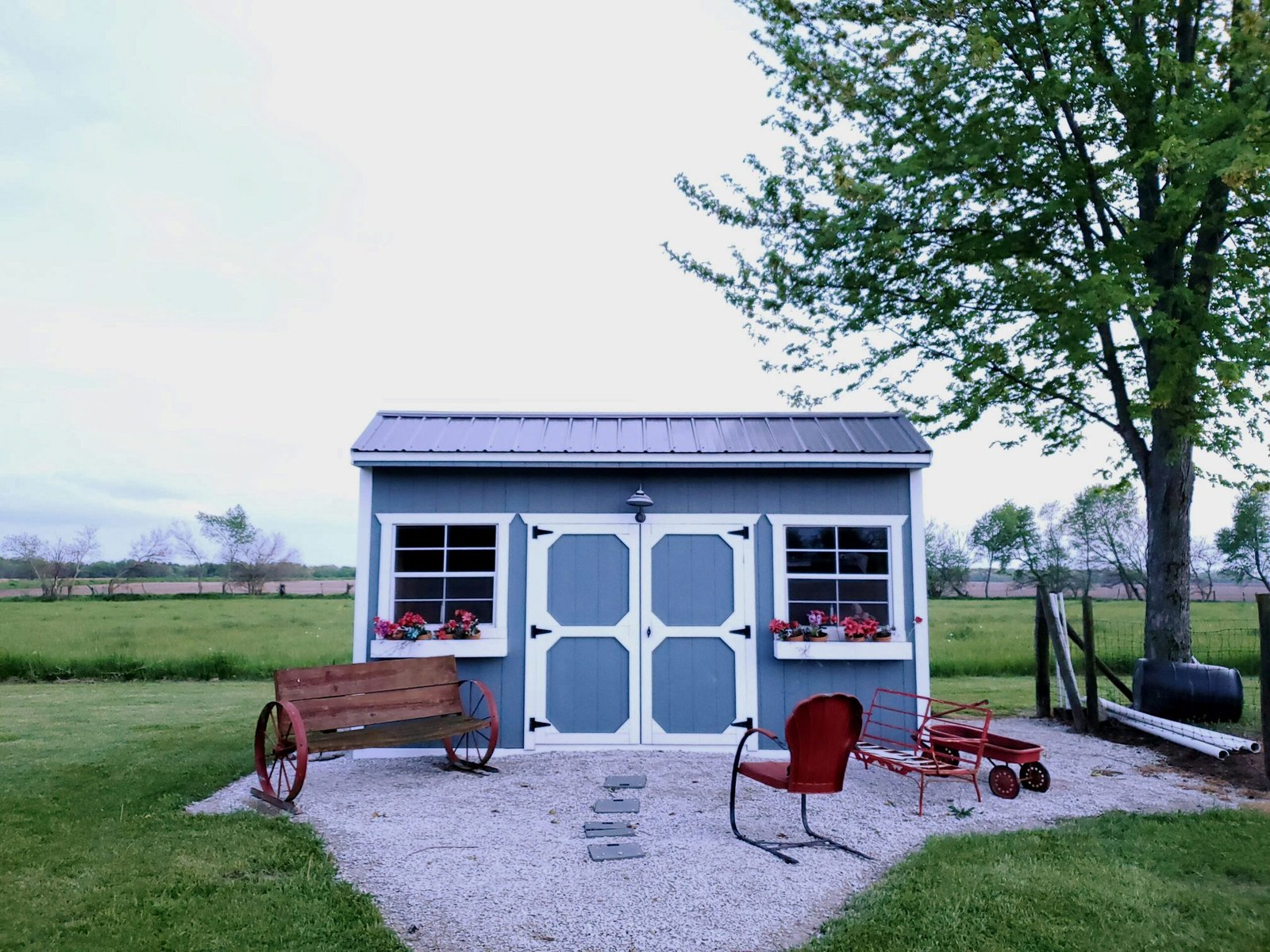The sun is barely up, the coffee is still steaming, and you have fencing to mend, cattle to feed, or timber to skid. None of it starts until your John Deere does. In the United States, there were an estimated 4,355,000 tractors in operation in 2011, each facing unique environmental challenges.
Ranches and woodland properties batter equipment with dust, bark, steep slopes, and surprise rocks. This guide provides a clear roadmap for keeping your machinery reliable. Following these steps will ensure your tractor cranks on the first turn, season after season.
Build Your Preventive-Maintenance Calendar
John Deere service intervals are built around the reality of hard use. Sticking to a schedule is crucial for longevity and performance.
- 10-Hour Walk-around: Fluids, grease zerks, debris removal
- 50-Hour Check: Engine oil, loader pin grease, fan-belt inspection
- 200-Hour Service: Hydraulic filters, fuel filters, front-axle oil, torque checks
- 600-Hour Major: Coolant change, valve lash (on select models)
Create a spreadsheet or use the John Deere Operations Center app so alerts pop up automatically. Annual maintenance and repair costs can represent 10-15% of total operational costs, making proactive scheduling a smart financial move. A laminated wall chart in the barn also works well for quick reference.
| Key Insight: Proactive scheduling transforms maintenance from a chore into a strategy. Using an app or a barn chart ensures no critical service interval is missed, preventing costly downtime and extending machine life. |
Daily & Pre-Operation Checks (Five-Minute Routine)
This quick routine is your first line of defense against unexpected breakdowns. Since tractor accidents are a leading cause of injuries in agriculture, these checks also enhance operator safety.
- Fluids: Verify engine oil, coolant, hydraulic, and DEF (Tier 4) levels.
- Visual Walk-around: Look for leaks, check tire or track pressure, and confirm all pins and bolts are secure.
- Airway Clear: Blow out radiator fins and clean the engine air screen, as woodland debris can cause overheating.
- Cockpit Quick-Test: Ensure all lights and gauges function correctly and the PTO engages smoothly.
Engine & Fuel System Care
The engine is the heart of your machine, and clean fuel is its lifeblood. Proper fluid selection and filtration are non-negotiable for performance.
- Oil Viscosity Matters: A 15W-40 oil works for most climates, but consider a 5W-40 synthetic for sub-zero temperatures to prevent dry starts.
- Water Separator Drain: Crack the petcock every 10 hours to remove condensation, a primary enemy of modern fuel systems.
- Filters: A clogged aftermarket filter can starve your pump.
| Important: Diesel condensation is the #1 enemy of modern fuel systems. Draining the water separator is not optional; neglecting it can lead to catastrophic failure of your high-pressure pump and injectors. |
Hydraulic & PTO Health
Woodland grapples, stump grinders, and log splitters hammer hydraulic circuits harder than a finish mower ever will. Adopt this routine to keep them running smoothly.
- Every 200 hours, drop the hydraulic oil and clean the main screen to remove any metal flakes.
- Inspect hoses for chafing where they rub against the loader arms and add spiral wrap before the steel braid shows.
- For the PTO Spline, smear EP-2 grease with each implement change to prevent excessive wear.
When wear does occur, source replacements from reputable third-party options such as HW Part Store's reliable John Deere aftermarket parts.
| Pro Tip: Before a hydraulic hose fails in the field, it whispers. Regularly check for chafing, especially on loader arms, and add spiral wrap. This five-minute check prevents a five-hour repair job. |
Attachment & Implement Readiness
Brush hogs, box blades, augers, and forestry mulchers deserve their own walk-around. Regular checks prevent costly damage to both the implement and the tractor.
- Grease Zerks: Reference the grease-point map in your implement's manual and apply grease as needed.
- Blades: Sharpen mower blades every 25-30 hours and forestry mulcher teeth every 8-10 hours for optimal performance.
- Quick-Hitch Alignment: Park on level ground and back up straight to prevent binding the PTO shaft.
Tires, Tracks & Undercarriage
Proper ballast and tire selection are key to traction and stability. The right setup depends heavily on your specific terrain and tasks.
- Ballast Right: Fill rear tires with ballast on hilly timber plots or use suitcase weights for flat pasture work.
- Radial vs. Bias-Ply: Radials offer better traction in loose soil, while bias-ply tires are more resistant to punctures from stumps.
- CTL Track Tension: With the front raised, tracks should sag about ½ to ¾ inch at the mid-roller.
Electrical & Battery Reliability
Dust, sawdust, and sap can coat terminals and cause connection issues. A monthly check can prevent frustrating no-start situations.
- Remove the negative cable first, scrub posts with a wire brush, then apply dielectric grease to prevent corrosion.
- Winter: Use a smart tender or a battery disconnect switch, as sub-zero temperatures can reduce cranking amps by 30%.
Operating Environment Adjustments: Ranch vs. Woodland
Ranch Dust & Chaff
Open fields introduce unique challenges that require daily attention during peak seasons. Buildup of dry material is a common issue.
- Blow out air filters daily during haying season to maintain engine performance.
- Watch for chaff buildup on exhaust manifolds, as it can become a serious fire risk.
Woodland Sticks & Sap
Forested areas present risks from falling debris and tight spaces. Constant vigilance is necessary to protect sensitive components.
- Inspect the radiator screen twice per shift to prevent overheating from clogging.
- Fold in panoramic mirrors when navigating tight trails to avoid snagging branches.
Seasonal Storage & Off-Season Prep
Properly storing your tractor during the off-season is vital. These steps prevent issues caused by moisture, pests, and fuel degradation.
- Fill the tank and add diesel stabilizer, as empty space in the tank can lead to condensation.
- Fog the cylinders with storage oil to protect internal engine components from rust.
- Place desiccant packs in the cab to deter mice and prevent mildew growth.
- Drain sprayer lines and pressure-wash implements before parking them for the season.
Record-Keeping & Digital Tools
Logging your maintenance is simple with modern apps. Detailed records not only help you stay on schedule but also add significant value to your machine.
- Open the Operations Center app, navigate to your machine, and select “Add Event.”
- Enter the hours, describe the task, and upload a picture of the parts receipt.
- Enable push notifications to get reminders before the next service interval is due.
| Key Insight: A detailed digital service log isn't just for maintenance; it's an investment. Buyers pay a premium for proven care, potentially adding over 10% to your tractor's resale value. |
DIY vs. Dealer Service: Knowing When to Call the Pros
Do It Yourself
Many routine maintenance tasks are straightforward and can be handled with basic tools. These include fluid changes and simple part replacements.
- Oil, filter, coolant, and belt swaps
- Loader pin and bushing replacements
Call the Certified Tech
Some jobs require specialized tools, software, or expertise to be done correctly and safely. Attempting these can lead to bigger problems.
- ECU diagnostics and software updates
- Hydraulic hose crimping for high-pressure circuits
- Final-drive reseals that require special tools and shims
| Important: Modern tractors are complex. Attempting DIY repairs on ECU diagnostics or high-pressure hydraulics without proper tools can void warranties and turn a small issue into a catastrophic, multi-thousand-dollar failure. |
Quick FAQ
Q: How often should I grease loader pins?
A: Every 10 operating hours, or with every fuel fill-up if you are moving hay all day long.
Q: Is aftermarket hydraulic fluid safe?
A: Yes, but only if it meets the JDM J20C specification. Avoid fluids that do not have this certification listed.
Q: My tractor sits for four months. What is the most important preventive step?
A: Condition the diesel fuel and keep the battery on a maintainer. Most no-start calls trace back to stale fuel or dead batteries.
Your Next Steps
With a solid plan, you can ensure your equipment is always ready to work. Start by organizing your maintenance schedule and stocking essential parts.
- Download the official John Deere maintenance schedule for your specific model.
- Enter your current hour reading into the Operations Center app and set your first service reminder.
- Audit your parts shelf to ensure you have filters, belts, and shear bolts ready for the next service interval.
Lay out your tools tonight, and if any step feels over your head, schedule a consult with your nearest dealer. Your equipment and your bottom line will thank you for the proactive care.




